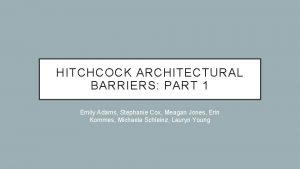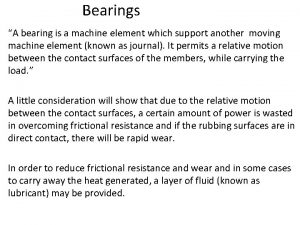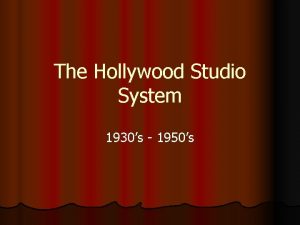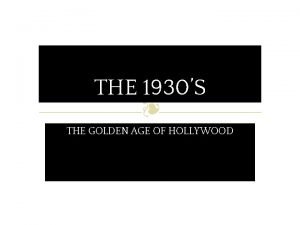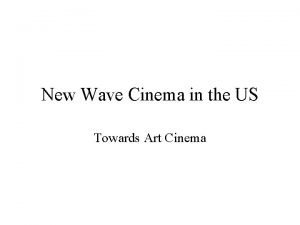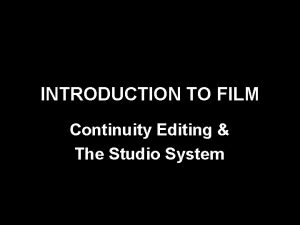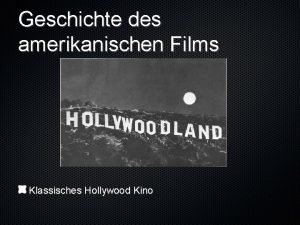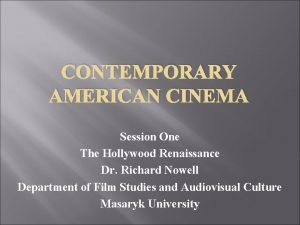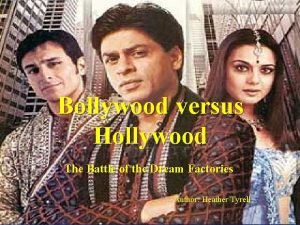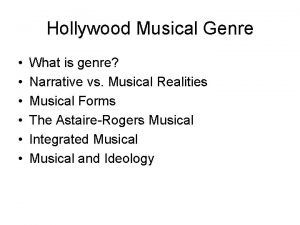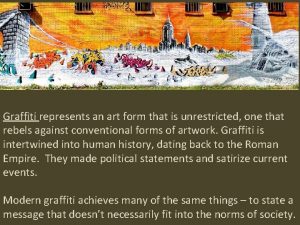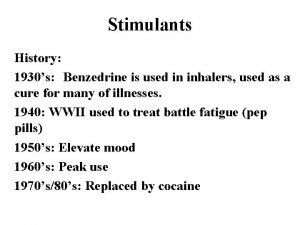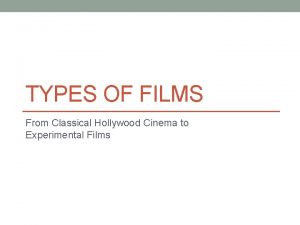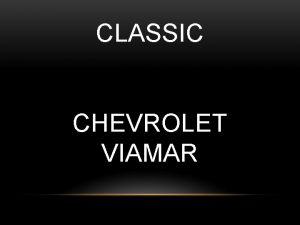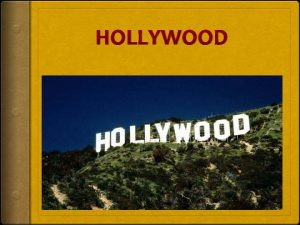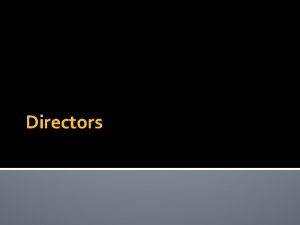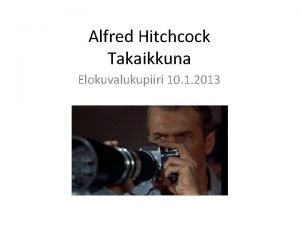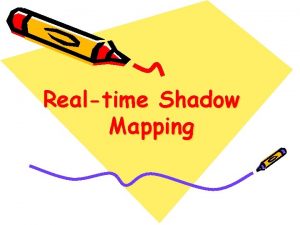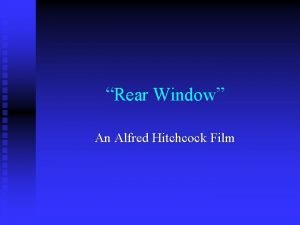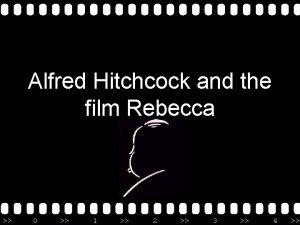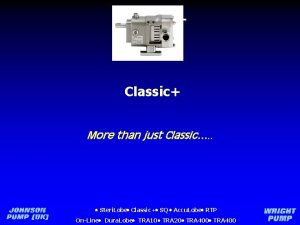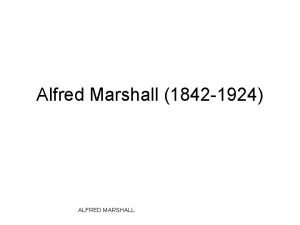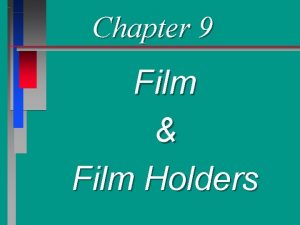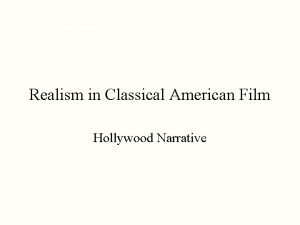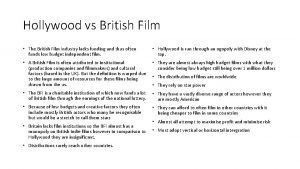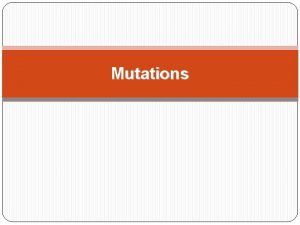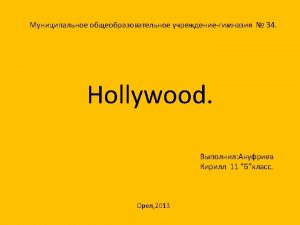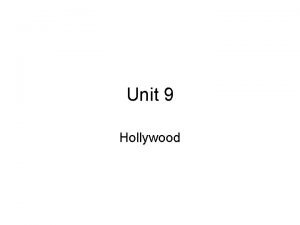Classic Hollywood Film Language Alfred Hitchcock Shadow of





















- Slides: 21

Classic Hollywood Film Language Alfred Hitchcock: Shadow of a Doubt (1943)

Film Language and Technique: Class Aims Discuss Film as Narrative Review “Classic Hollywood Style” Intro Vocabulary Terms Discuss Use and Impact of Film Techniques http: //images. amazon. com/images/P/B 000055 Y 14. 01. LZZZZZZZ. jpg

Class Schedule Introduce, discuss film as narrative; group discussion/comments: 12 min. How film is set up: 5 min. Building blocks of film 7 min. Shot, Scene, Sequence Camera movement and placement: 15 min. Lighting: 10 min. Editing: 10 min. Film techniques telling a story and expressing ideology: 10 min.

Classical Hollywood Style Belton argues that Hollywood cinema is a _____-centered drama. How does cinema develop characters? Break into Groups: come up with an example of a film you have recently viewed that develops (or fails to develop) a character. How does this work?

Character Narration in Shadow of a Doubt Perhaps the most obvious narration occurs in Uncle Charlie’s voice-over ____. How does this element advance the story? What does it tell us? http: //hitchcock. alienor. fr/shadow. html

Film Technique Terms: Basic Units Frame _____ of the film’s image on the ______ Mise-en-Scene: French: “___ on _____”

Film Technique Terms: Basic Units Shot: Basic unit of _______ One _____ piece of filming

Film Technique Terms: Basic Units Scene Several _____ unified by _____ and ______

Film Technique Terms: Basic Units Sequence Several ______ unified by common time, but _______ by space

Basic units in Shadow of a Doubt Establishing shots Long shots of the city Gradually dissolve into one another and move in on a locale —i. e. , a sequence

Film Technique Terms: Movement/Placement Focus: Rack: camera changes from ______ to _______ Deep: camera _______ fore- and background

Film Technique Terms: Movement/Placement Angle: establishes the viewer’s _______ to the ______ High: camera looks ____ Low: camera looks ___ How does this affect our perceptions of the characters? http: //www. imagesjo urnal. com/issue 02/inf ocus/shadow. htm

Film Technique Terms: Movement/Placement Zoom: lens adjusts so scene appears to move _______ the viewer Pan: _______ pivoting of camera Tilt: when camera looks _____

Film Technique Terms: Movement/Placement Crane: the camera is moved _______ by crane Tracking: camera rolls along a _______ Dolly: camera moves on _____ in ___ direction Steadicam: device to keep _______ camera _____

Camera Movement in Shadow of a Doubt In the opening sequence: Crane shot up to Charlie’s room Camera tracks across room: how does this position the viewer?

Film Technique Terms: Lighting Position _______ Lighting The ____ light is the dominant light source _______ lighting is bright and less shadowy _______ lighting is darker and more uneven

Lighting in Shadow of a Doubt http: //www. imagesjournal. com/issue 02/infocus/shadow. htm How would you characterize the lighting of this shot? What is the effect on the viewer? What mood does lower -key lighting create?

Film Technique Terms: Editing “Classical continuity editing”: a. k. a. _____ editing Editing between scenes is called _____ Editing within scenes often seek to conceal _____

Film Technique Terms: Editing Transitions: Cut: 2 shots joined ______ together Fade: gradual ____ or _______ of onscreen image Dissolve: ____ fade in and out Iris: ______ closed or widened Wipe: where one scene appears to wipe the other ______

Film Technique Terms: Editing within scenes: ____ techniques Matches: including _______ match Point-of-view editing: ___ shot process 180 -degree rule: ______ convention

Summing up Film Techniques as a Language in the service of ____ Stylistic _____ becomes a goal of Hollywood cinema techniques Film style is not “superficially ______” on the narrative Think about how film technique influences viewing
 Hitchcock isd superintendent
Hitchcock isd superintendent Hitchcock
Hitchcock Steve hitchcock takeda
Steve hitchcock takeda Wedge film journal bearing
Wedge film journal bearing The hollywood studio system in the 1930s and 1940s
The hollywood studio system in the 1930s and 1940s Golden age of hollywood 1930s
Golden age of hollywood 1930s Etds universal studios hollywood
Etds universal studios hollywood Hollywood 1977
Hollywood 1977 Continuity editing definition
Continuity editing definition Inhalt des films
Inhalt des films Hollywood renaissance films
Hollywood renaissance films West hollywood relocation fees
West hollywood relocation fees Hollywood versus bollywood
Hollywood versus bollywood Dream factory hollywood
Dream factory hollywood Hollywood silver fox farm v emmett
Hollywood silver fox farm v emmett The world capital of filmed entertainment
The world capital of filmed entertainment Music genre hollywood
Music genre hollywood Hollywood africans
Hollywood africans Hollywood vs history
Hollywood vs history Where is the hollywood sign
Where is the hollywood sign Benzedrine inhaler hollywood
Benzedrine inhaler hollywood Elements of classical hollywood cinema
Elements of classical hollywood cinema

